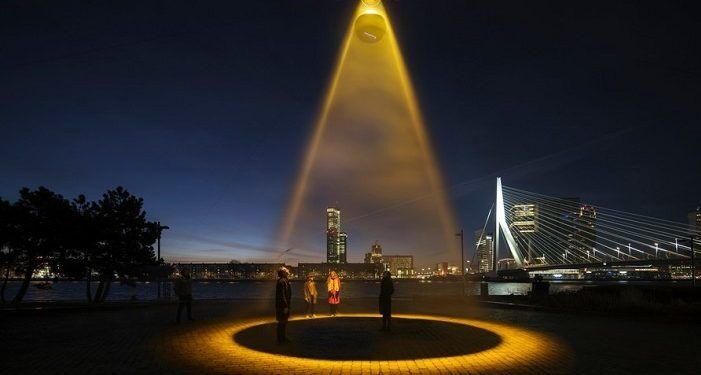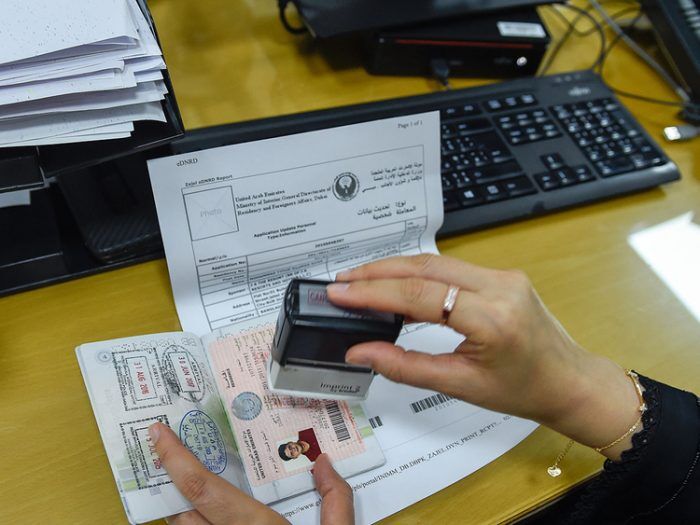It has been one year and more, since the pandemic has shattered the normal life on this planet. While the vaccinations are given to almost all parts of the world, the corona virus, with its vulnerable mutation is still mocking the health infrastructure of the entire world. This is the right time that the ‘Urban Sun’ comes to save the people from Covid-19.
What is Project Urban Sun?
The Project Urban Sun, introduced by a Dutch scientist Daan Roosegaarde is a conduit that accumulates light from the far Ultraviolet spectrum that could kill corona virus in the air. This Project was successfully demonstrated at Rotterdam on March 2nd and it is possibly one of the prime centers of attraction in Dubai Expo.
How does Urban Sun work?
Roosegaarde claims that light of wavelength around 222 nanometers can kill 99.9 per cent of the corona virus. “It started with the realisation that something physically so small as the virus is having such a huge impact on our lives,” he told the media.
“Suddenly our world is filled with plastic barriers and distance stickers. We’re afraid to shake each other’s hands and family is reduced to pixels on a computer screen. Let’s be the architects of our new normal and create better places to meet and interact”, he added.
Roosegaarde came across an article, a few months ago, regarding ultraviolet rays of some specific frequency that could destroy the SARS Cov-2, the fatal virus responsible for the death of millions. He then piled up his surveys regarding this idea and grouped up with some scientists. They worked on an exact UV light frequency and also enquired if this places human health at risk.
“This is public knowledge that has been available for years. So why aren’t we investing in the research, in the possibilities of how light can help us?” He recollected the time when the idea hit him.
Controlling UV light at safe frequency
Dated back in 2004, some American physicists proposed that C type ultra violet light with frequency around 254 nano meters could kill the common Corona viruses. But the researches on using UV light at this frequency came to a dead end because these lights caused skin cancers and ulcers on human beings.
This was why even in the starting stages of the pandemic, the robotic sanitations and IR disinfections were strictly controlled and allowed to use only when no people are present, in UAE.
Roosegarde found out that studies from Japan had proposed a still lower frequency UV lights that could kill the original corona viruses. “The sensitivity of the coronaviruses to far-UVC light, together with extensive safety data … suggests that it may be feasible to have the lamps providing continuous low-dose far-UVC exposure in public places – potentially reducing the probability of person-to-person transmission of coronavirus as well as other seasonal viruses such as influenza” a paper from Nature magazine quoted.
This paper kindled the Project Urban Sun, which was carried out with the help of MEG, a photo-bionics company in Italy. The project constructed an aircraft like vehicle that hovers in the open space and emits ultra violet rays of 222 nanometers wavelength. Virtual simulations have shown that this device could eliminate viruses in a range of 95 square meters, and that too within a few minutes.
“At the same time, we have designed for a larger unit of about 3,500 square metres, which could be applied in Expo 2020 Dubai, for example,” Roosegarde said. As it has met all the safety standards, the Project Irban Sun was commissioned by International Commission on Non-Ionising Radiation Protection. The source of the Ultra violet radiation was tested and calibrated by the Dutch National Metrology Institute.
Other projects
While, the Urban Sun has attracted appreciations from all corners of the world within a short time, this is not the only project that Roosegarde has come up with. There are seven other projects with him that, according to Roosegarde, are dream projects.
“A dreamscape is a dream that we turn into reality to improve life,” he told the media. “All eight aim to address the way we live at the moment.” One among the dream projects was a seven metre tall vacuum cleaner that counters air pollution, especially in regions where smog threats prevailed. He used positive ionization technology in building this project. The device can be embedded in billboards and bikes or even in wedding rings.
An excellent solution to traffic density problem was suggested by Roosegaarde by introducing Van Gogh fluorescent bicycle path that was solar powered. These are interactive roads that acts as an indicator to live traffic in them.
‘Grow’ was his another dream project, which had an application on agricultural sector. Lightings like that we use in night clubs and all had a positive impact on farming, according to him. Developed in association with the University of Wageningen Institute of Research, Roosegarde used a 20,000 square meter leek field and turned into ‘light recipes’.
He used red, blue and UV light bulbs, that were solar powered that enhanced plant growth and resilience in this field. It reduced the use of pesticides by 50 per cent. Based on the theory that LED lights could imitate the action of solar light in plant growth, the experiment turned out to be a huge success.
“Grow is an artwork, but it’s also a platform to speed up the [application of] light science because now people know about it and want it. We created this demand that was not really there before – I mean, I have 220 emails of farmers in Peru,” Roosegaarde commented about ‘light recipes’.
Roosegarde considers himself as an activist, when he said “Activists go out and protest, which is stating an opinion. I’m an activator because I don’t care about opinions. I care about proposals. And results. That’s driven by wonder, by imagination. If we can’t imagine a better future, we won’t be able to create it. I’m not the inventor of far-UVC light. I’m not a scientist, nor a photobiology expert, but I can create an artistic vision and put it out there and then see how the world reacts to that”.
“These projects are all driven by the desire to make things that make people curious instead of scared about the future.”





![The Top & Most Popular Seafood Bucket Restaurants in Dubai for you [Never Miss]](https://cdn-bcaic.nitrocdn.com/xbqiknhylajlKDYOliCLZeRuxPCWDGHz/assets/images/optimized/rev-b04d989/uae24x7.com/wp-content/uploads/2020/09/8-seafood-in-a-bucket-scaled-e1600739237403.jpg)